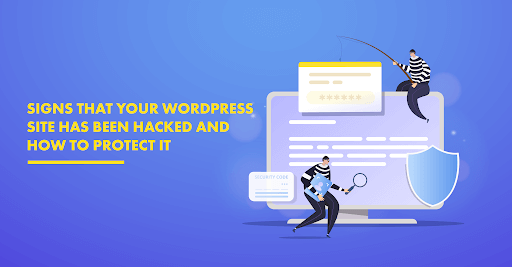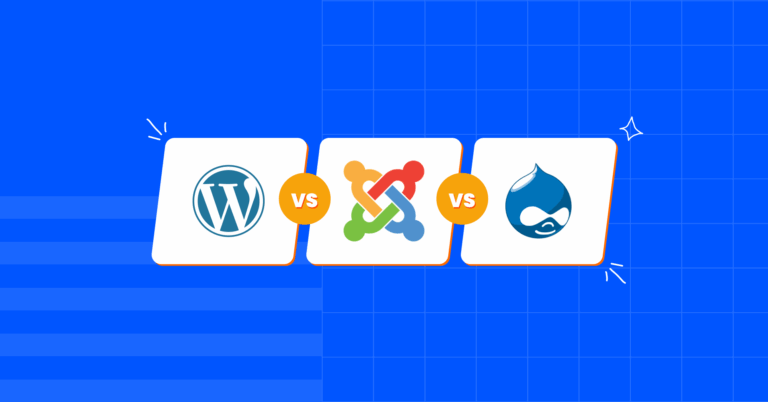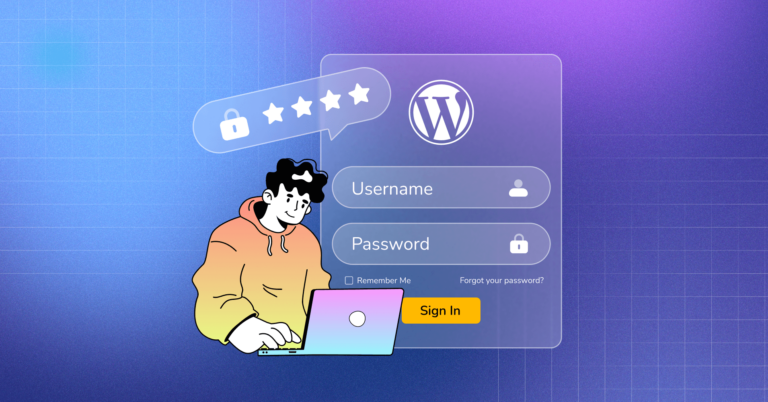
14 Signs that a WordPress Website has been Hacked & How to protect it
Share :

We will never spam you. We will only send you product updates and tips.
Thanks to the popularity of the WordPress platform, websites built on it are always in the line of attack. The sooner you can detect the malware or attack, the lesser the damage. For that, you must know how to tell if your website has been hacked. Are there any telltale signs to indicate if a website is hacked? Sure, there are.
In the rest of this article, we take you through the 14 signs of a hacked WordPress website and how you can protect your website.
14 Signs that your website has been hacked
What are the signs that a website has been hacked?
Here are the 14 of the most common symptoms of a hacked website:
- Google warning message on visiting your website
- Warning message in the Google SERP
- Warning message from Google Search Console
- Your website is suspended by your web host
- Customer complaints
- Your website is slow
- Website being redirected
- Pop-up and Spam Ads
- Modified website files
- Emails ending in the Spam folder
- Unknown Admin users and FTP accounts
- A sudden spike in website traffic
- Inability to log into Admin dashboard
- Unusual activity in Server logs
Let’s find out how these signs indicate if a website has been hacked:
1. Google warning message on visiting your website
A hacked website is often blacklisted by the Google Safe Browsing technology. When users visit such a website, Google displays a warning message about the website being hacked.
The Google warning message is supported on most popular browsers including Google Chrome, Mozilla Firefox, Safari, and Opera.
2. Warning message in the Google SERP
Try searching for your website name in Google search and if you see a website hacked sign or a warning message stating “This site may be hacked”, your website could be infected with malware infections.
Google displays this warning message on the search engine results page (or SERP) to stop its users from accessing this website.
3. Warning message from Google Search Console
Also known as Google Webmaster, the Google Search Console will notify you about your website being hacked through email. This will happen only if your WordPress site has been linked to the Google Search Console.
Additionally, this notification email will also contain valuable information about the attack including suspicious URLs – along with recommended steps on how to fix the problem.
4. Your website is suspended by your web host
WordPress web hosting companies do regularly scan their web or hosting server for any malicious code. When they detect any such code, they suspend the hosted website to stop the infection from spreading to other hosted sites. Apart from malware code, web hosts may suspend your website for a variety of reasons including it being blacklisted by Google or your web server sending out spam or phishing emails.
5. Customer complaints
Hackers often use data breaches or phishing to collect your customer records including credit card numbers. If your customer support team is receiving large volumes of customers complaining about not being able to log in to their accounts or receiving suspicious phishing emails from your account, chances are high that your website has been hacked.
6. Your website is slow
Hackers also deploy Denial-of-Service (or DoS) attacks to overload your server resources, thus impacting your website speed and performance. . They do this by sending massive volumes of website requests to your server from fake IP addresses. This effectively overburdens your server, thus slowing it down significantly. If your website is taking an unusually high time (over 10 seconds) to load on any device, it is likely to be infected with malware.
7. Website being redirected
Incoming traffic to your website being redirected to other websites is one of the signs that your website has been hacked. Hackers often deploy cross-site scripting (or XSS) attacks to send your website traffic to unsolicited websites selling counterfeit or illegal products. This can be done by inserting malicious JavaScript code into your page sources.
8. Pop-up and Spam Ads
Are you seeing a lot of pop-ups and spam ads on your website front page? Your website has likely been infected by XSS attacks or malicious code. This usually happens when you have installed an insecure plugin or theme. Hackers use these online ad impressions to earn money when any “unsuspecting” visitor clicks on them. Another website hacked sign is when you receive a notification email from the Google Safe Browsing team.
9. Modified website files
To insert backdoors and other malicious code in your WordPress installation, hackers often modify your Core WordPress files like wp-config.php and .htaccess. If you have observed that many of the core installation files have been recently modified, the chances are high that they have been corrupted by hackers. Apart from modified files, check for unknown PHP or ASPX files that may have been recently added to your installation folder.
10. Emails ending in the Spam folder
Are your official emails sent to clients or associates ending up in their spam folder? This can happen when your web server is infected with malware infections. As a result, Email servers may categorize your legitimate emails as “spam” and even blacklist your web server and IP address. Every email that ends up as spam means loss of business and your company’s reputation.
To prevent this from happening, it’s best to use an external email sending service. Free SMTP plugins like FluentSMTP make it really easy to set up and use an external email sending service instead of WordPress.
11. Unknown Admin users and FTP accounts
Are you seeing many new admin users and FTP accounts in your WordPress database? Hackers may have gained unauthorized access to your WordPress database and created them for their nefarious activities. Hackers often create “fake” admin users to gain privileged access to your user base and create backdoors to compromise your website soon.
12. A sudden spike in website traffic
Are you witnessing a sudden and unexpected spike or drop in your website traffic? This could be a sign that your website has been compromised. For instance, hackers deploy a method called “spamvertising” to insert malicious links into your website. This can cause a sudden spike in incoming traffic, which is then redirected to the hacker’s website. In the long run, this can cause a sudden drop in your website traffic – either due to redirecting or Google blacklisting.
13. Inability to log into Admin dashboard
Regular users (with admin privileges) are unable to log into their WordPress Admin dashboard. This only means that hackers have taken control of your administrator account and blocked you out from it. One of the common reasons for this is the use of “default” usernames for WordPress administrators like “admin” or “admin123” which are easier to guess for hackers.
14. Unusual activity in Server logs
Server logs are an efficient way to determine if your website has been hacked or not. Located in the cPanel of your WordPress hosting account, server logs contain access logs that display the users who have recently accessed your WordPress account and error logs that list modification errors such as denied connections and deprecated functions.
By detecting any unusual activity including modifications and account logins in your server logs, you can get a good idea of whether hackers are targeting your site.
These are 14 of the common signs and symptoms that suggest that your WordPress site has been compromised. Next, let us look at steps to protect your WordPress site from hackers.
How to protect your WordPress site from hackers?
Here are 7 proven ways of protecting your WordPress site from hackers:
- Update your WordPress components – including the Core WordPress version and installed plugins and themes – to the latest available version. Remove/replace any nulled plugins or those that haven’t been updated in a while.
- Take regular backups of your WordPress files and database. You can automate this using a backup tool like BlogVault or Backupbuddy.
- Purchase and install your third-party plugins and WordPress themes only from trusted developers and companies.
- Install an SSL certificate for your website to encrypt sensitive data between your web server and the user’s browser.
- Strengthen your WordPress user credentials by assigning a unique username and strong passwords (at least 12 characters long) to each user.
- Install and configure a website firewall to block any unauthorized access.
- Invest in a reliable WordPress security plugin that can detect and remove a variety of malware variants as soon as your site is infected.
- Hire a website security expert – that’s the last option. For hiring, you can look into website’s that offer’s jobs for developers.
In Conclusion
With WordPress sites, hacks are no longer the exception, they are the expectation. It is up to you to act quickly to detect when your site is hacked so you can clean it before malware has time to wreak too much damage.
The best way to do this is to implement the WordPress best practices and ensure that you scan your website for malware regularly. Security plugins like MalCare help you do this through automated and scheduled website scanning and one-click removal so you don’t have to waste time waiting for external technical support.
A hacked website impacts so much more than just your website. It undoes years of SEO effort, puts your customers and their data at risk, reduces your brand’s credibility, causes downtime, and damages reputation and revenues for a long time to come. The best thing to do is to educate yourself, follow best practices in WordPress security, and keep an eye out for abnormal behavior on your site. We hope this article helps you put in place measures to ensure the security of your site and the success of your business.






Leave a Reply
You must be logged in to post a comment.